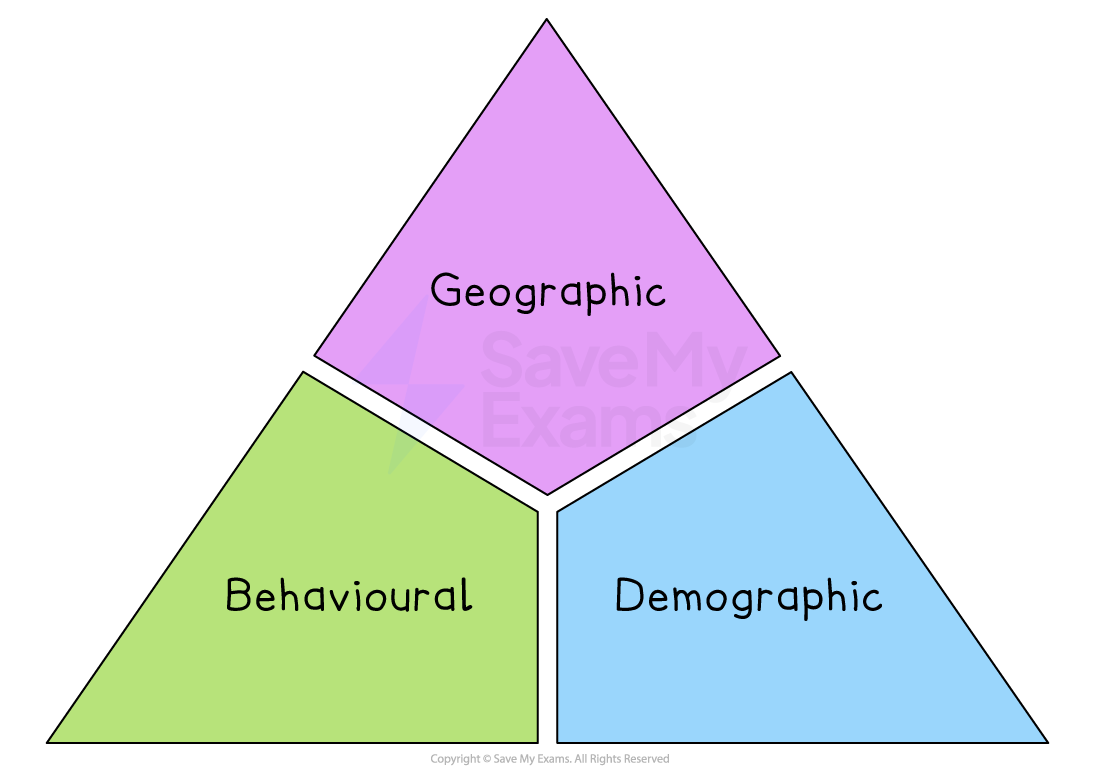Market Segmentation (Cambridge (CIE) A Level Business): Revision Note
Exam code: 9609
Methods of market segmentation
Market segmentation is the process in which a single market is divided into submarkets or "segments"
Each segment represents a slightly different set of consumer characteristics
Firms often segment their markets according to factors such as income, geographical location, religion, gender or lifestyle
A market for a good such as crisps is not simply seen as one market
For example, the crisp market is divided into many market segments
Dinner party snacks (Walkers Sensations, Pringles, Burts) are targeted at those with higher discretionary income with a premium price
Health-conscious crisps (Walker's Lite, Walkers Baked, Ryvita Lite) are targeted at the health-conscious market
Lunch box value snacks (multipacks, Hula Hoops, etc.) are targeted at families and the mass market
Segmentation methods

Geographic segmentation
Geographic segmentation involves breaking up a market into groups of customers who live, work or spend their leisure time in defined locations
Urban and rural customers' needs relate to their surroundings
E.g. city-dwellers are likely to purchase small, electric vehicles, while those who live in the countryside tend to prefer larger, all-terrain vehicles
Customers in warmer countries make different purchasing decisions to those living in cooler climates
E.g. sales of air-conditioning units in Italy and Turkey are significantly higher than in Germany and the UK
Within a country, customers living in different regions have varied preferences
E.g. France is well-known for its regional food specialties, with residents of southern départements generally preferring a Mediterranean diet, whilst those in more northern regions consume more dairy products and red meat
Behavioural segmentation
Customers make different lifestyle, health or dietary choices that can provide opportunities for businesses
E.g. travel companies target different packages at families, thrill-seekers and those looking to pursue a specialist interest such as cuisine or art
Beyond Meat's entire product range is aimed at vegans, vegetarians and flexitarians cutting down on animal protein
Its plant‑based burgers and sausages are sold in supermarket meat aisles
Some purchasing decisions are based on thorough research, whilst others tend to be impulse buys
E.g. home store Dunelm places low-priced household essentials such as dusters and scented candles close to the checkout area
Other behavioural factors include
the frequency of purchase
E.g. whether customers buy a product often or as a one-off, for regular consumption or as an occasional treat
whether customers are brand loyal
E.g. those that stick with the same brand may be rewarded with loyalty benefits, such as points for each £ spent, while those that switch brands may be attracted by special offers, such as BOGOF (Buy One Get One Free)
Demographic segmentation
Demographic segmentation involves breaking up a market into groups of customers with similar characteristics, such as age, gender and family circumstances
Men and women often have different purchasing preferences
Men tend to spend more than women when shopping
Women are more price-sensitive shoppers than men, buying more reduced-price items and using price promotions more frequently
As populations age, spending patterns are changing
Spending on specialist services such as personal care and single-person travel has increased significantly
Many products are aimed at different age groups, who are likely to have different interests, influences and spending power
E.g. in 2022, consumers in the United States spent an average of $1,945 on clothing, with most being spent by the generation born between 1965 and 1980, known as Generation X
Many countries have increasingly ethnically diverse populations
Markets for clothing, food and celebration items can be targeted at specific ethnic or religious groups
Advantages and disadvantages of market segmentation
Advantages | Disadvantages |
|---|---|
|
|
|
|
|
|
|
|

Unlock more, it's free!
Did this page help you?